Rose Charlotte
Charlotte is a variety of English roses by David Austin. Bred in 1993, introduced in 1994. The registration name is 'AUSpoly'. Cross ('Chaucer' x 'Conrad Ferdinand Meyer') and 'Graham Thomas' pollen. The name of the variety is dedicated to Charlotte, one of Austin's granddaughters. This variety harmoniously combines the ancient flower shape and modern requirements for roses, and is also one of the most beautiful yellow English roses.
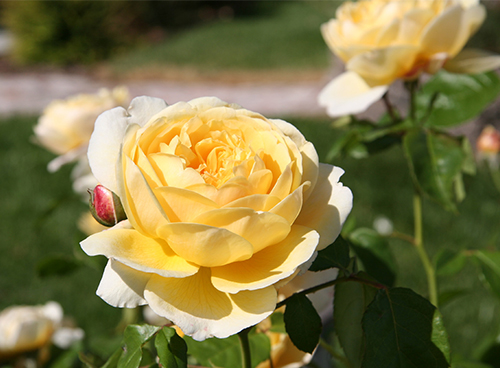
Charlotte is very similar to its progenitor 'Graham Thomas'. But it is distinguished by a softer color of flowers, endurance and good winter hardiness.
The bush is dense, compact, branched, erect, reaches a height of 90 - 185 cm, width - 120 - 150 cm. This ratio gives the plant a harmonious and rounded shape. Leaves are glossy, dark green in color.
The flowers are densely double, 8 - 11 cm in diameter, contain up to 100 slightly wavy petals. The shape of the roses changes as they bloom from a rounded-pointed bud to a deep-cupped (hemispherical). Unopened bud of deep yellow or yellow-purple color. The opened flowers are honey-yellow. When dissolved, the extreme petals lose their rich color and become pale yellow. Flowers grow one at a time or are collected in small clusters of 3 to 5 buds. The aroma of roses is fragrant, pleasant and sweetish.
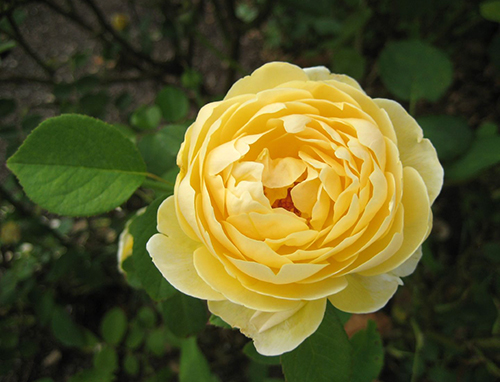
The first wave of flowering is the most lush and abundant, it lasts from June to July. From mid-July to autumn, flowering becomes more modest, but there are always flowers on the bush. By lightly pruning the shoots between flowering periods, the plant can produce more lush flowering. Also, such pruning allows you to maintain the neat shape of the bush.
The thin stems of this shrub bend strongly under the weight of the large buds, so the plant needs support. This attractive shrub rose is often grown on a trunk.
Medium resistance to black spot and powdery mildew.
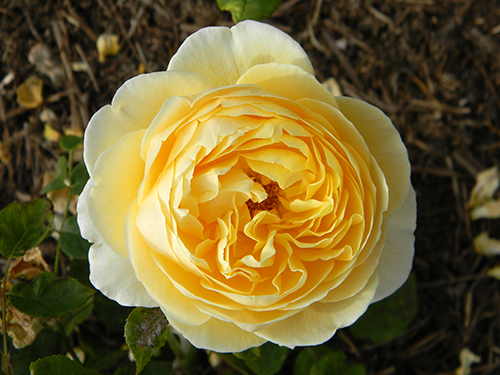
Charlotte's frost resistance, according to the US Department of Agriculture (USDA), corresponds to zone 5b (minus 26.1 ° C). In this regard, in central Russia, the plant must be covered for the winter. Spruce branches, dry oak leaves, juniper branches, lutrasil can be used as a covering material.
In hot climates, the plant is best planted in partial shade, so the flowers will last longer on the bush and will not fade.
Advantages of the variety: fragrant flowers, unpretentiousness, vigorous growth, resistance of flowers to bad weather conditions.
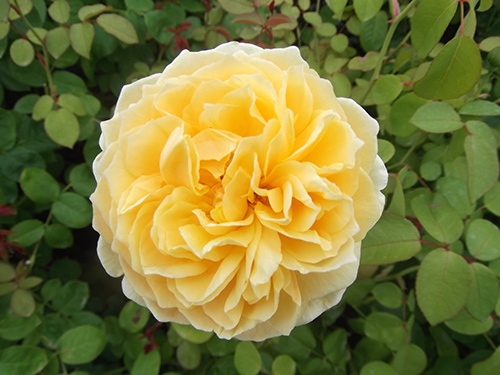
Disadvantages: flowers quickly crumble and fade from exposure to sunlight, rather weak resistance to black spot and powdery mildew.
Charlotte is a gorgeous rose with beautiful flowers that look like pompoms in half-release. According to gardeners, these yellow roses find a special response in their soul. They look amazing with wonderful companions such as 'Grace', 'Crocus Rose', 'Abraham Darby', 'Gertrude Jekyll', 'William Sheakespeare' and 'William Morris'. You can also create a sunny yellow rose garden on your site, collecting, in addition to this rose, such wonderful varieties as' Golden Celebration ',' Graham Thomas', 'Molineux', 'Charles Darwin', 'Teasing Georgia', 'The Poet's Wife ',' Emil Nolde 'and' Amber Queen '. Charlotte is also beautiful in a mixborder with blue-violet flowers of delphiniums, muzzle, bell, sage, catnip and lavender. You can fill the space around the rose bushes with luxurious peonies of your favorite shades. Also, low varieties of lilacs can be planted in the background to such a composition.
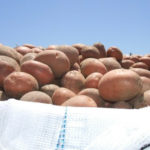
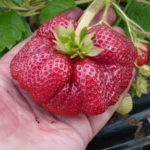
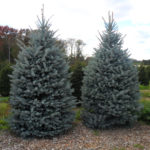
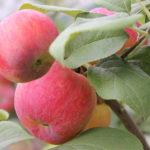

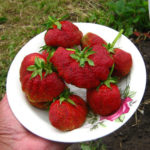



One of my favorite roses! It blooms profusely and for a long time. With a very pleasant aroma. Flowers are not afraid of rain. Throughout the summer, I never had a problem with her. Grows in my full sun.